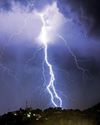
The tablets showing haiku by Matsuo Bashō are steeped in the seasonal certainties of the late 1600s. There are references to full moons, chirping cicadas and, of course, cherry blossoms.
Almost four centuries later, Basho's words continue to inspire admiration and countless amateur exponents of the 17-syllable form, but they are also a reminder that haiku faces what some of its enthusiasts fear is an existential threat: the climate crisis.
The poems displayed at regular intervals along the promenade are intended to evoke the cooler climes of autumn, but this year they feel off-kilter.
The walk begins outside the hut Bashō stayed in before setting off on an odyssey that would result in his most famous work, Oku no Hosomichi (The Narrow Road to the Deep North).
The sun is beginning to dip, but the air is still heavy with humidity. The exertions of walkers and cyclists, in T-shirts and shorts, making their way to the crown of the bridge are written in the sweat on their brows.
One of the poems encapsulates the feeling of seasonal misalignment.
A whiteness whiter than the stones of Stone Mountain
The wind in autumn
Basho wrote those words after a visit to a hilltop temple in near the Japan Sea coast, on 18 September 1689.
This story is from the {{IssueName}} edition of {{MagazineName}}.
Start your 7-day Magzter GOLD free trial to access thousands of curated premium stories, and 9,000+ magazines and newspapers.
Already a subscriber ? Sign In
This story is from the {{IssueName}} edition of {{MagazineName}}.
Start your 7-day Magzter GOLD free trial to access thousands of curated premium stories, and 9,000+ magazines and newspapers.
Already a subscriber? Sign In

If kids get protected from online harm, how about the rest of us?
The Australian government has proposed a ban on social media for all citizens under 16.

'It's not drought - it's looting'
Spain is increasingly either parched or flooded - and one group is profiting from these extremes: the thirsty multinational companies forcing angry citizens to pay for water in bottles.

Life in the grey Zone
Neonatal care has advanced so far that babies born as early as 21 weeks have survived. But is this type of care always the right thing to do?

Out of tune? Band Aid under fire for Africa tropes as it turns 40
Forty years ago this month, a group of pop stars gathered at a west London studio to record a single that would raise millions, inspire further starry projects, and ultimately change charity fundraising in the UK.

Deaths shine spotlight on risks of drinking on party trail
Vang Vieng is an unlikely party hub. Surrounded by striking limestone mountains and caves in central Laos, it morphed from a small farming town to a hedonistic tourist destination in the early 2000s.

Different strokes My strange and emotional week with an AI pet
Moflin can develop a personality and build a rapport with its owner - and doesn't need food or exercise. But is it comforting or alienating?

Strike zone Waking up to the rising threat of lightning
When the Barbados National Archives, home to one of the world's most significant collections of documents from the transatlantic slave trade, reported in June that it had been struck by lightning, it received sympathy and offers of support locally and internationally.

Cheap pints and sticky carpets: the old-school pub is back
In the Palm Tree pub, east London, barman Alf is taking only cash at the rattling 1960s till.

Brain gain Can a radical tax scheme convince the country's brightest to stay?
In the autumn of 2018, I moved to Lisbon for a month-long course at the Universidade .de Lisboa.

Fear and sympathy in small town divided over asylum camp
A year after anti-immigration riots, a site for asylum seekers faces hostility while some locals try to help new arrivals